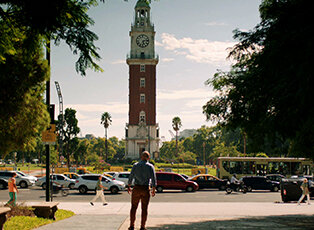
Migrating Malbec
As we continue to celebrate our new partnership with wine travel specialists Winerist, we look back at our presenters visiting just a few of the many wonderful places Winerist offers tours to.
This week, Joe Fattorini has been in Argentina to find out about a very successful immigrant…
Joe Fattorini
Where does Malbec come from? To a wine fan it’s easy. It’s a dark, inky red grape variety from South West France. Or at least it is if you pronounce it MAL-bec. But what if you pronounce it Mal-BEC? Like they do in Argentina. Where this migrant grape has made a new home.
Malbec has made its home in Argentina along with thousands of other migrants. Article 25 of Argentina’s Constitution reads “The Federal Government will encourage European immigration, and it will not restrict, limit or burden with any taxes the entrance into Argentine territory of foreigners who come with the goal of working the land.”
Among these “foreigners” were European settlers who arrived in Mendoza to grow grapes and make wine. Like the ancestors of Susana Balbo and Laura Catena. Today they make some of the world’s greatest Malbec (Mal-BEC). And Susana and Laura feel Malbec has become something different. Something distinctly Argentine.
The pioneering spirit of their ancestors lives on today. We visit Laura’s famous Adrianna Vineyard, high in the foothills of the Andes. People long believed it was impossible to ripen grapes here. But Laura’s father Nicolas trudged through winter snow and unpaved, dusty summer roads to establish the vineyard. Today Laura has developed it into one of the most prized sites in Argentine winemaking. And one of the most celebrated places in the world for the Malbec. It’s no longer just one grape among a range of more familiar variety names they offer. Malbec has become synonymous with Argentina and what makes Argentine wine distinctive. And its fortunes are intertwined with the fortunes of the people who grow it, and make it into wine.
In mile-high vineyards under the Andes we discover how grapes, and people, have migrated to make modern Argentina. And Argentine wine.

